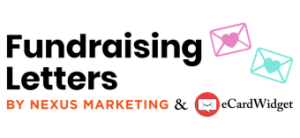Peer-to-peer fundraising not only allows you to raise funds for your cause, but it also empowers you to strengthen relationships with current supporters and build new bonds as well. It’s a way to expand your reach and spread your cause far and wide—all while giving your community members agency to lead.
However, launching a peer-to-peer campaign can be intimidating, as it requires coordinating a group of fundraisers, preparing them to take charge, and constantly communicating with both fundraisers and donors. This guide will help you get up and running with your campaign quickly while also avoiding burnout along the way.
Week 1: Hone Your Strategy
The first week of your campaign preparation is about setting the foundation. By the end of this week, your fundraising team should:
- Define your campaign goal. Rally your community around a SMART (specific, measurable, achievable, relevant, and time-bound) goal. Instead of a vague goal like “raise $50,000,” your goal should provide context so fundraisers know exactly what they’re raising money for and donors understand what they’re contributing to. For example, your goal may be to “raise $50,000 to provide 200,000 meals to our community through our food bank.”
- Choose your technology. Select a peer-to-peer fundraising software that allows you to set up team and individual fundraising pages, gamify your campaign, track fundraising progress, and easily share campaign pages. Test it ahead of time by setting up a sample fundraising page and making a small donation.
- Build a toolkit. Developing a fundraising toolkit will equip your fundraisers with the resources they need and save time that your team would otherwise spend answering questions throughout the campaign. This toolkit should contain a document summarizing the story behind your campaign and why it matters, as well as photos they can share, email templates, sample social media posts, and a how-to guide explaining how to set up their campaign pages.
While creating your fundraising toolkit will help avoid burnout by preventing your team from constantly answering fundraiser questions, take it a step further by developing a peer-to-peer fundraiser hub. Whether you use a web page, shareable Google Drive folder, Slack channel, or something else entirely, keeping all resources in the same place will further streamline the process.
Week 2: Recruit Fundraisers
Next, assemble your team of fundraisers. To avoid burnout and keep your campaign focused, start small. Instead of sending a mass email and trying to recruit as many fundraisers as possible, identify 10-15 people who are passionate about your cause and will likely participate. Look at the following supporter segments to find this group:
- Board members
- Volunteers
- Loyal donors
- Past peer-to-peer participants
Once you have this group, host one kick-off call in which you introduce the campaign, review the fundraising toolkit, and answer any questions. Instead of onboarding fundraisers as they sign up, you can record this call and add the link to your welcome email, further preventing burnout and saving your team time.
Week 3: Launch Your Campaign
You’ve made it to campaign week! Before officially kicking off, set up your campaign website. Bloomerang Fundraising’s peer-to-peer fundraising guide recommends creating an FAQ page to answer common participant, donor, and volunteer questions, using cohesive branding to match your organization, and including a fundraising thermometer to visualize progress.
Then, do the following to maintain momentum and keep your campaign running smoothly:
- Automate coaching emails. Create an automated drip campaign that encourages your fundraisers to continue engaging and sets them up for success without requiring manual reminders. For example, you may send them a reminder about the fundraising toolkit on the first day of the campaign, give them a tip for how to make their communications resonate on the third day, and update them on the campaign’s progress on the fifth day.
- Schedule social media posts. Use a social media scheduling platform to plan your social media posts. That way, you don’t have to worry about what you’ll post each day of the campaign as it’s happening. Create a variety of posts that share beneficiary stories and impact statistics, reminding participants and donors what they’re contributing to.
Additionally, consider reaching out to different businesses to see if they’d be willing to support your campaign through a matching challenge. For example, a food bank might enlist a snack company to match every dollar raised during a certain hour or day of the campaign. A matching challenge can maximize the funds you raise and increase momentum in the middle of your campaign.
Week 4: Wrap Things Up
Can you believe it’s already time for your peer-to-peer campaign to come to a close? Finish strong and avoid late-stage burnout by:
- Publicly recognizing standout participants. Instead of sending individual check-in emails, celebrate small wins publicly. This approach not only saves your team time but also motivates the rest of your fundraisers. For example, you may send a text blast to your fundraisers saying something like, “Happy Day 5 of the campaign! Congrats to Emma, who has already surpassed her fundraising goal of $2,000. Let’s keep the momentum going in these last couple of days!”
- Automating reports. Once your campaign ends, run reports in your nonprofit CRM to determine the total amount raised and identify the top fundraisers who contributed the most. Then, send a quick wrap-up email to everyone involved that summarizes the results, and follow up with additional impact communications once you’ve used the funds raised.
- Having fundraisers thank their donors. Chances are, you had tons of supporters contribute to your campaign, and it would be difficult to thank them all personally. Avoid burning out your team by assigning this responsibility to your fundraisers. Provide them with the email addresses of everyone who donated through their personal fundraising pages and a thank-you template to make the process seamless.
When you follow up with participants and donors through your wrap-up email, take the opportunity to offer additional engagement opportunities. While you shouldn’t ask for another donation right away, you likely acquired new donors through the campaign who may be interested in expanding their involvement through volunteering, advocacy, or events.
To continually improve your peer-to-peer fundraising approach, collect feedback from staff, participants, and donors. While staff can help you further streamline the process and prevent burnout, participants can offer suggestions for better training and motivating future fundraisers, and donors can provide valuable tips for engaging supporters and attracting them to your cause.

